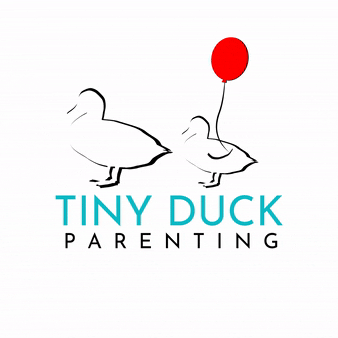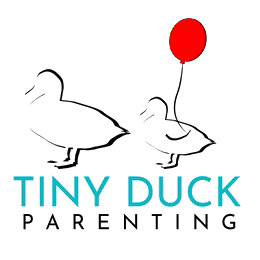Hello, wonderful parents! I’m Jennie, your friendly toddler sleep consultant from Tiny Duck Parenting. I’m thrilled to share some valuable insights with Dr. Judith Hoffman, co-founder of Manhattan Valley Pediatrics, to give a pediatrician’s perspective on toddler sleep training. Together, we aim to provide a comprehensive guide for creating blissful nights and happy days for you and your little one.

1. Consistency is Key:
Jennie’s Insight: Consistency remains the golden rule for establishing healthy toddler sleep habits. The process of sleep training for your toddler starts with the bedtime routine. A consistent nightly ritual fosters a sense of security for your child, signaling that it’s time to wind down. Think of the bedtime routine as a choreographed dance; it should be the same every night so your toddler knows exactly what to expect. Check out this Toddler Bedtime Routine Chart for guidance in crafting this rhythmic sequence that will lead your little one to peaceful dreams.
Dr. Hoffman’s Perspective: From a pediatrician’s standpoint, maintaining a consistent sleep schedule is vital for your toddler’s overall health and development. The internal body clock, also known as the circadian rhythm, plays a pivotal role in regulating various physiological processes, and a consistent sleep schedule helps synchronize this internal clock. This synchronization is crucial for optimal physical and mental well-being in toddlers.
Regular sleep patterns contribute to the efficient release of growth hormones, support immune system function, and aid in consolidating learned information, all vital components for a toddler’s healthy development. Typically, toddlers should aim for anywhere from 11 to 14 hours of sleep within 24 hours, including nighttime and naps. This sleep duration accounts for the dynamic nature of toddler development, where the body and mind are actively growing and forming connections.
Ensuring toddlers meet their sleep needs not only fosters physical health but also supports cognitive development, emotional regulation, and the overall resilience needed for navigating the challenges of toddlerhood. A consistent sleep schedule is a cornerstone in providing the foundation for a thriving and vibrant toddler, which is essential for toddler sleep training.
2. Understand Sleep Cycles:
Jennie’s Insight: As you begin the journey of sleep training your toddler, understanding sleep cycles empowers you to respond appropriately to their needs. Sleep cycles are the stages your body goes through during a night of sleep. There are two main types: REM (Rapid Eye Movement) and non-REM sleep. Non-REM includes lighter and deeper sleep, while REM is when vivid dreaming happens. These cycles repeat throughout the night, lasting around 90 to 110 minutes each. Understanding sleep cycles helps explain why we dream, how our memory works during sleep, and why a good night’s rest is essential for overall well-being.
Because we transition between sleep cycles in the middle of the night and our body wakes up, we begin sleep training a toddler by teaching them to fall asleep independently at bedtime so they can connect their sleep cycles in the middle of the night and fall back to sleep without help. This, in turn, contributes to the development of a more independent and confident sleeper, paving the way for uninterrupted nights of peaceful sleep for both your toddler and yourself.
Dr. Hoffman’s Perspective: Pediatricians emphasize recognizing and respecting your child’s sleep cycles. It supports the development of healthy sleep patterns, contributing to cognitive growth and emotional well-being. Toddlers, in particular, tend to thrive when their bedtime falls within the range of 7-7:30 pm, allowing for a consistent and optimal sleep schedule. This bedtime window is thought to coincide with the biological rhythms that govern a toddler’s sleep-wake cycle, enhancing the likelihood of a smooth and restful night.
By adhering to these guidelines and recognizing your child’s individual sleep needs and circadian rhythm, you can create an environment that fosters healthy sleep patterns and optimal cognitive and emotional development. This holistic approach to sleep aligns with the pediatrician’s perspective, emphasizing the interconnectedness of sleep, cognitive growth, and emotional well-being in the developmental journey of toddlers.
3. Create a Comfortable Sleep Environment:
Jennie’s Insight: When embarking on toddler sleep training, it’s important to control what you can control- and the room environment falls under your scope. A cozy sleep environment is essential for quality sleep. Ensure the room is conducive to rest by keeping it very dark, quiet, and at a comfortable temperature. Remove any night lights or wake clocks, as they tend to hinder a toddler’s success while learning to sleep independently.
Pro tip: the room conditions as your child falls asleep at bedtime should be the same in the middle of the night- i.e., if they fall asleep with the sound machine on and lights out, leave the sound machine on and lights out for the entirety of the night.
Dr. Hoffman’s Perspective: Pediatricians echo the significance of a comfortable sleep environment, emphasizing its role in preventing sleep disturbances and promoting a sense of safety for your toddler. One crucial component of toddler sleep training is ensuring a secure sleep space, making the room safe for sleep. Pediatric experts stress the importance of anchoring furniture and securing any potential hazards to mitigate the risk of accidents or injuries during the night. Anchoring dressers, bookshelves, and other furniture items add an extra layer of safety, especially as toddlers become more mobile. By taking proactive measures to eliminate potential safety hazards, parents contribute to a sleep environment that prioritizes comfort and guarantees a secure haven for their little ones. By doing so, you create a sanctuary in the room where your toddler can peacefully rest, knowing that comfort and safety have been thoughtfully considered.
4. Say No to Late-Night Stimulants:
Jennie’s Insight: Avoid stimulating activities close to bedtime. Think of your toddler’s bedtime routine as a bridge from awake to sleep. From the end of the bath until goodnight, the energy should stay calm and very relaxed. Avoid the naked after-bath run around- in fact, bring your toddler’s pjs into the bathroom at the start of the bath, so after they are dry, you can put pjs on in a smaller space, then carry your little one directly to read books together. Avoid books that are too engaging as you lead your toddler to dreamland. Select books about sleep that have less vibrant pictures and that you can calmly and quietly read to help your little one begin to relax and sleep.
Dr. Hoffman’s Perspective: Late-night stimulants significantly impact a toddler’s sleep. It is important to avoid activities that could stimulate them close to bedtime. This advice extends beyond energetic play, encompassing avoiding screen time before bedtime. I suggest that parents limit exposure to electronic devices as it helps minimize disruptions to the natural sleep-wake cycle, ultimately facilitating a smoother transition to sleep.
Did you know that overtiredness in children can trigger an increase in cortisol, a stress hormone? Establish a calming pre-bedtime routine that excludes stimulating elements to enhance sleep quality and overall health. Parents and caregivers are crucial in creating a serene environment for their toddlers by removing physical and digital stimulants. This proactive approach diminishes the impact of cortisol surges, promoting a restful night’s sleep and contributing to the child’s overall well-being.
5. Master the Art of Napping:
Jennie’s Insight: Napping is crucial for development, especially for children under age 2.5. Establish a consistent nap schedule and create a relaxing environment for daytime sleep. Typically, toddlers under age 3 do best with a nap ranging from 30 minutes to two hours. A 5-hour gap between nap wake-up and bedtime lights out is ideal for a toddler. The routine and room are important to foster a positive naptime. To have a successful at-home nap with your toddler, the bedroom being extremely dark is important for success- the room should be so dark that even in the middle of the day, it is challenging to navigate around the room.
Dr. Hoffman’s Perspective: As a pediatrician and a mom of two daughters, I continually emphasize to parents the importance of tailoring nap duration and frequency to meet their toddlers’ unique needs. It’s a cornerstone in fostering optimal cognitive function and mood regulation in these formative years.
Understanding that each child has specific requirements, I encourage parents to establish consistent nap routines that align with their toddler’s age and developmental stage. This tailored approach not only enhances cognitive abilities, allowing toddlers to process and retain information more effectively, but also plays a vital role in maintaining stable moods.
From my pediatrician’s perspective, the proactive incorporation of appropriate nap schedules into toddlers’ routines is fundamental to their overall growth and development. By following these guidelines, parents can contribute significantly to creating an environment that supports not only physical health but also the emotional well-being of their little ones.
6. Be Mindful of Sleep Associations:
Jennie’s Insight: Encourage self-soothing to avoid excessive reliance on sleep props. As you embark on sleep training your toddler, now is an excellent time to say goodbye to sleep props such as the bottle or breast, pacifier, being held, or someone staying with the toddler to fall asleep. It’s crucial to minimize excessive reliance on sleep props because while certain comfort items may play a role in the initial process of falling asleep, an over-dependence on external aids can hinder a toddler’s ability to navigate sleep cycles autonomously.
Encouraging self-soothing helps toddlers develop the skills to manage these brief awakenings independently, fostering resilience in the face of natural sleep disruptions. Toddlers inherently seek independence, and meeting them where they are in their developmental journey is essential. This can involve incorporating elements of choice and autonomy into their bedtime routine and giving them space to gain the confidence to fall asleep independently.
Dr. Hoffman’s Perspective: As a pediatrician, I strongly emphasize nurturing self-soothing skills in toddlers, recognizing their profound impact on their overall sleep experience. Fostering the ability to self-soothe promotes independence and resilience, crucial attributes for navigating the natural disruptions within sleep cycles.
Part of this encouragement involves a thoughtful approach to using sleep props. While certain comfort items may provide initial reassurance, striking a balance is important. Excessive reliance on external aids can inadvertently hinder a toddler’s development of self-soothing capabilities. By minimizing dependence on sleep props, we empower toddlers to rely on their internal resources, enhancing their capacity to navigate moments of wakefulness during sleep cycles autonomously.
7. Patience is Your Greatest Ally:
Jennie’s Insight: Learning new sleep habits requires patience. Introducing a new routine may pose challenges for your child, and the parents must maintain a calm, grounded, and relaxed demeanor throughout this transition. Patience becomes an essential virtue as your toddler adapts to the changes, understanding that consistency is paramount for success. Though toddler sleep training may pose initial challenges, staying steadfast and patient will contribute to the long-term benefits of improved sleep habits for your child’s overall well-being.
The journey to improving your toddler’s sleep doesn’t have to be a long and drawn-out experience. With our Week to Sleep program, your toddler will be staying in bed and sleeping through the night in just one week! Sleep is vital for a child’s well-being, so our program is designed to improve your child’s sleep efficiently and easily and get lasting results, so sleep is forever off your mental list of to-dos.
Dr. Hoffman’s Perspective: Pediatricians echo the sentiment, highlighting the role of parental patience in navigating changes to a toddler’s sleep patterns. Consistency and patience yield positive results when it comes to toddler sleep training.
8. Stopping early morning wake-ups in their tracks:
Jennie’s Insight: Persistent early morning wake-ups can often be traced back to specific factors within the sleep environment. Light filtering into the room, discomfort from a too-full pull-up or diaper, or waking up hungry due to an incomplete dinner can contribute to this issue. If your child wakes prior to 6am, encourage more sleep- anything before 6am is still considered the middle of the night!
Dr. Hoffman’s Perspective: Addressing early morning wake-ups can be complex, and seeking professional guidance is a prudent step. Pediatricians advocate for open communication with healthcare professionals, stressing the importance of reaching out when confronted with ongoing sleep challenges in toddlers. Consulting with a healthcare expert ensures a comprehensive evaluation, considering both physical and behavioral factors that may contribute to early waking. This collaborative approach empowers parents with targeted strategies and support, fostering a positive trajectory towards more restful mornings for toddlers and their families.
9. Optimizing the time it takes to drift to sleep:
Jennie’s Insight: Understanding the time it takes for your toddler to fall asleep is key to crafting an effective bedtime routine. Incorporate calming activities into the pre-sleep ritual, such as a relaxing end-of bath, reading a book, singing a lullaby, and a few minutes of a peaceful backrub. Creating a consistent and soothing environment can help your toddler transition seamlessly from wakefulness to sleep. Tailoring the bedtime routine to your child’s unique preferences and needs contributes to a more peaceful and efficient process of falling asleep. Typically, when you provide toddlers with a relaxing bedtime routine and leave the room, they should be able to fall asleep within approximately 10-20 minutes. Falling too fast or taking too long to fall asleep can lead to struggling with bedtime and sleep over time.
Dr. Hoffman’s Perspective: The average time it takes for toddlers to fall asleep, typically ranges from 10 to 20 minutes. A consistent bedtime routine is essential for signaling your child that it’s time to wind down. Avoiding stimulating activities and screen time close to bedtime contributes to a smoother transition to sleep. By understanding and incorporating the appropriate time for your toddler to fall asleep into their bedtime routine, you create an environment that promotes a quicker and more peaceful transition to a restful night’s sleep. Consistency in these practices fosters healthy sleep patterns and contributes to overall well-being.
10. Seek Professional Guidance:
Jennie’s Insight: If your toddler persists in having sleep training challenges, speak to a sleep consultant specializing in toddler sleep, as infant sleep is very different! Our online Week to Sleep program is the key to toddler sleep training! Your child will fall asleep quickly and sleep through the night in just one week, or your money will be back!
Dr. Hoffman’s Perspective: Pediatricians encourage open communication with healthcare professionals, underscoring the importance of seeking guidance when faced with persistent sleep challenges in toddlers. The goal of toddler sleep training is to teach your toddler to sleep through the night so they get the sleep their bodies need to thrive.
In closing, as you embark on the journey of toddler sleep training, remember that consistency, understanding sleep cycles, creating a comfortable sleep environment, and being mindful of sleep associations are key elements to ensure success.
Patience and seeking professional guidance when needed are invaluable tools in this process. By fostering healthy sleep habits in your toddler, you’re laying the groundwork for their overall well-being and development. With dedication and support, both from experts like Jennie at Tiny Duck Parenting and pediatricians like Dr. Judith Hoffman from Manhattan Valley Pediatrics, you can create blissful nights and happy days for both you and your little one. So, here’s to peaceful nights and brighter mornings ahead!





